Best PC gaming mice 2024: Reviews and buying advice


If you want to be competitive in PC games these days, you can forget about using a run-of-the-mill office mouse. Instead, you’ll need a powerful device that’s optimized just for gaming.
Manufacturers go to great pains to design specialist devices that give players an edge, with enhancements like unique body sizes and shapes, customizable weight, and extra grips to increase speed and accuracy. On top of that, the best gaming mice have unique hardware enhancements like highly sensitive sensors and complex button configurations to keep up with fast-paced games.
Deciding on the right mouse is a highly personal decision that needs careful consideration. Factors like the size and shape of your hand, your preferred grip style, the types of games you play, and the number of buttons you need, are all factors in your quest for the best gaming mouse.
Why you should trust us? PCWorld has delivered in-depth product reviews and news going on 40 years now. Our reviewers aren’t just peripheral geeks, they’re also avid gamers on a mission to find the best gaming gear for themselves. Because of that they know the ins and outs of gaming gear, what’s good and what’s not.
Every mouse we review is put through a rigorous testing process by our expert reviewers. We appraise everything from the device’s comfort and reliability, to its performance in games. We also compare each product to competitors to sum up whether or not they represent value for money. See our article on how we test gaming mice for more details.
Updated June 25, 2024 to include the Razer Basilisk Ultimate as an alternative to our Best MMO pick, the Razer Naga V2 Pro. The Basilisk Ultimate’s smooth glide, solid feel, and 11 programmable buttons make it a great option for MMO players that don’t need a side button grid.
Razer DeathAdder V3 – Best wired gaming mouse / Best overall
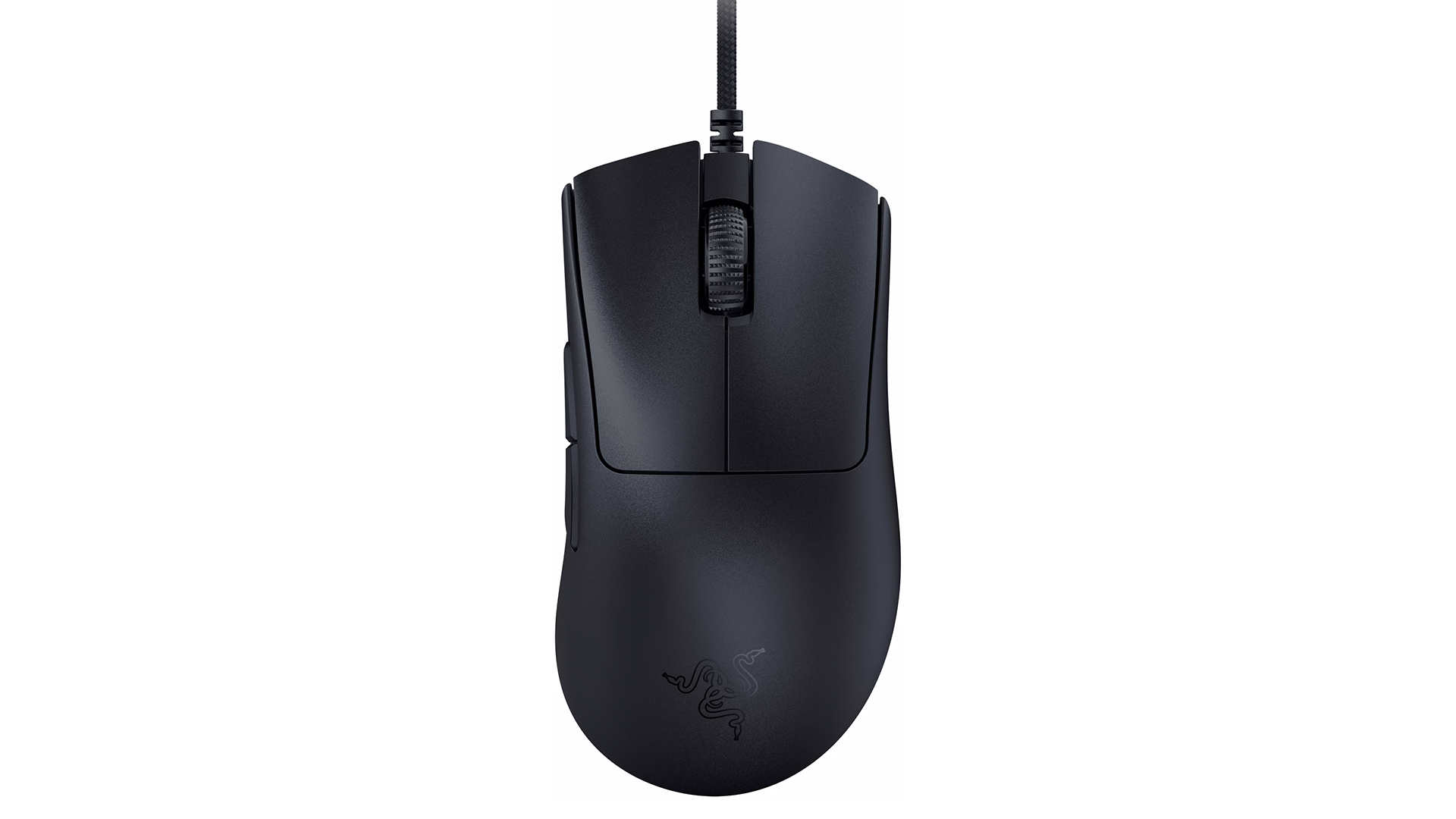
Pros
Very light (59 grams) Ergonomic design for right-handers High-precision sensor USB polling rate of 8000Hz Durable Razer Optical Switches (up to 90 million clicks) High-quality PTFE grade feet
Cons
Non onboard storage of the key assignment No RGB lighting
Why I like the Razer DeathAdder V3
Lightweight, wired FPS mice don’t come any quicker than the Razer DeathAdder V3, which is maxed out with an extraordinarily sensitive 30,000 DPI Razer Optical Sensor and a whopping 8,000Hz hyper-polling rate that’s eight times as fast as the standard 1,000Hz polling rate you get in other FPS gaming mice.
If that isn’t already enough speed for you, the V3’s lightweight 2.08-ounce (59 grams) chassis and 100 percent PTFE feet combine for an exceptionally quick and smooth glide over your mouse mat, making it even more deadly in FPS gaming.
Who should buy the Razer DeathAdder V3
Based on the DeathAdder V3’s weight anyone looking for more speed in their FPS games would be well advised to get one. It’s also ideal for palm grippers with large- to medium-sized hands who will undoubtedly find plenty of support in its generous proportions for all sorts of tricky maneuvers.
If you prefer a comfy thumb rest when you’re gaming, then you might want to consider the Logitech G502X instead. Apart the extra comfort you get in the thumb rest, the G502X has a unique side trigger button that sets it apart from most mice of its ilk.
Read our full Deathadder V3 review
Corsair M75 Air Wireless – Best ambidextrous grip

Pros
Its narrow high-backed design enables superior control The 26K Optical Sensor is quick and precise Up to a quick 2000Hz / 0.5ms default polling rate
Cons
One button for Bluetooth and Wi-Fi can be confusing There’s just one on-board memory profile No DPI switcher button Best Prices Today:$59.99 at Amazon
Why I like the Corsair M75 Air Wireless
The Corsair M75 Air’s 26K Optical Sensor reports at a quick 2,000Hz maximum polling rate (that’s 1,000Hz higher than some more expensive FPS gaming mice), which means I get ridiculously smooth and precise motion in games like Fortnite and Counter-Strike 2 in 2.4GHz Wi-Fi mode. Yet, this mouse’s hardware alone isn’t the only trick up its sleeve — its symmetrical design is just as noteworthy.
The mouse’s excellent symmetry and low-key side buttons allow it to be used just as easily as a left- or right-handed mouse. There are five buttons all up, which all fire off quickly enough to win surprise attacks. There’s no top DPI button to speak of, but what you gain is an exceptionally lightweight design.
Who should buy the Corsair M75 Air Wireless
If you like a feeling of control in your play, the M75 Air’s high back is perfect for that; it pushes against your palm comfortably, syncing with your movements. The M75 Air’s long narrow front also provides plenty of space to stretch out your trigger fingers.
Read our full Corsair M75 Air Wireless review
Razer Cobra Pro – Best general purpose wireless gaming mouse
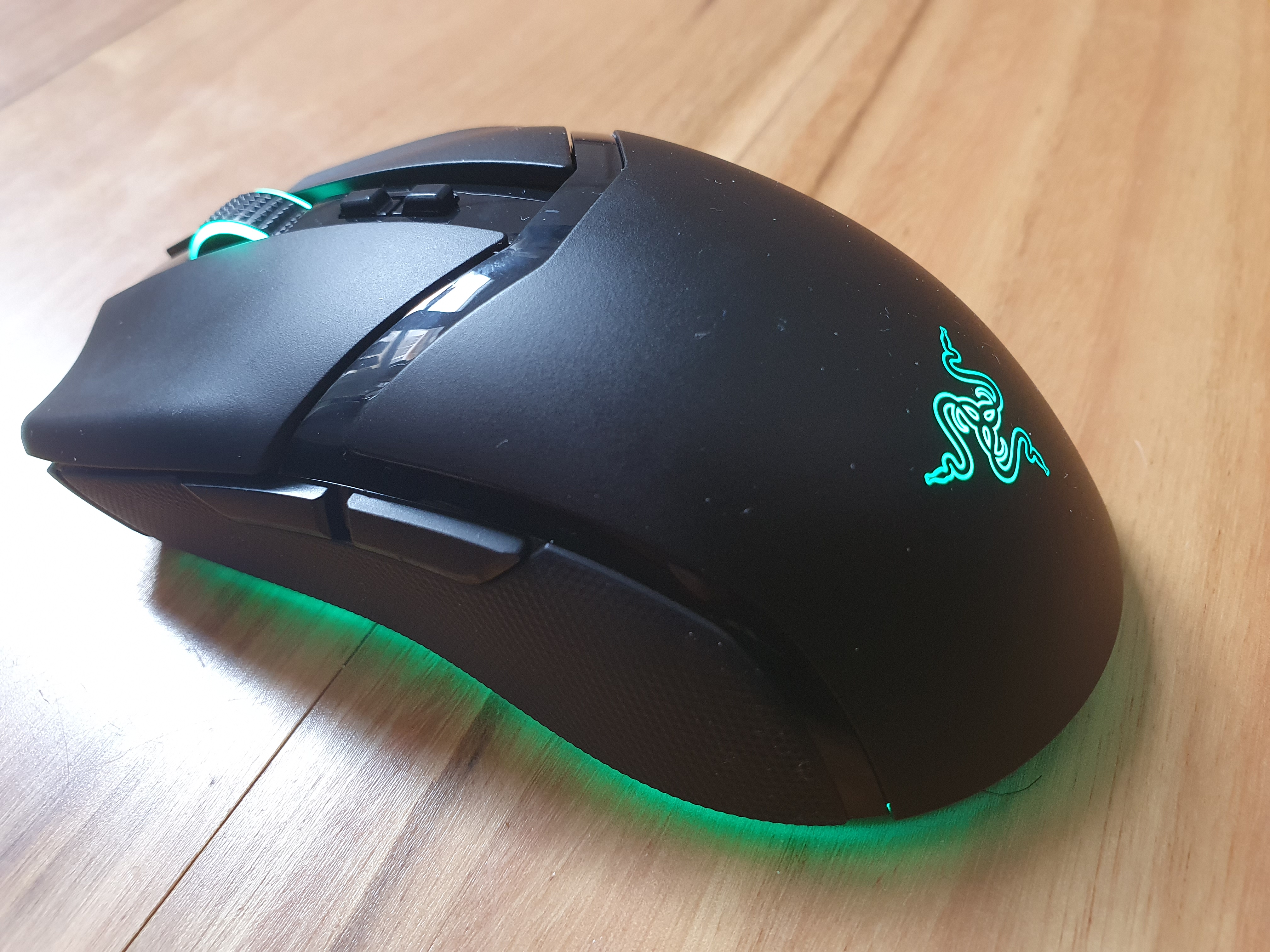
Pros
Its Razer Focus Pro 30K sensor is superb Dedicated DPI up/down buttons makes switching DPI on the fly easy Having 11 zones of RGB is brilliant
Cons
The dimensions won’t suit large hands Buying the Cobra Pro with a Hyper polling dongle costs extra It’s a little heavier than its stablemate the Razer DeathAdder V3 Pro Best Prices Today:$127.90 at Amazon$128.99 at Best Buy
Why I like the Razer Cobra Pro
The Razer Cobra Pro is an excellent all-round gaming mouse with a very sensitive 30K sensor that will give the best esports mice a run for their money. While its 2.78-ounce (79 grams) weight makes it a little heavier than many competitive FPS mice, it boasts features that most mice don’t have. Indeed, features like its up / down DPI buttons that allow you to switch DPI on the fly, its gorgeous 11 zones of RGB lighting, and Tri-Mode connectivity (wired, 2.4GHz Wi-Fi, and Bluetooth) make it a highly versatile and sought-after gaming mouse.
Its one drawback, however, is its compact size, which comfortably fits small to medium sized hands but is a little too small for some large hands. Of course, this won’t affect players who prefer to use a claw grip, so this mouse is especially suited to them.
Who should buy the Razer Cobra Pro
Esports players or keen competitive players wanting one of the quickest mice you can buy, but also want the convenience of extra features that most esports mice don’t have.
Read our full Razer Cobra Pro review
HyperX Pulsefire Haste 2 Wireless – Best budget wireless gaming mouse
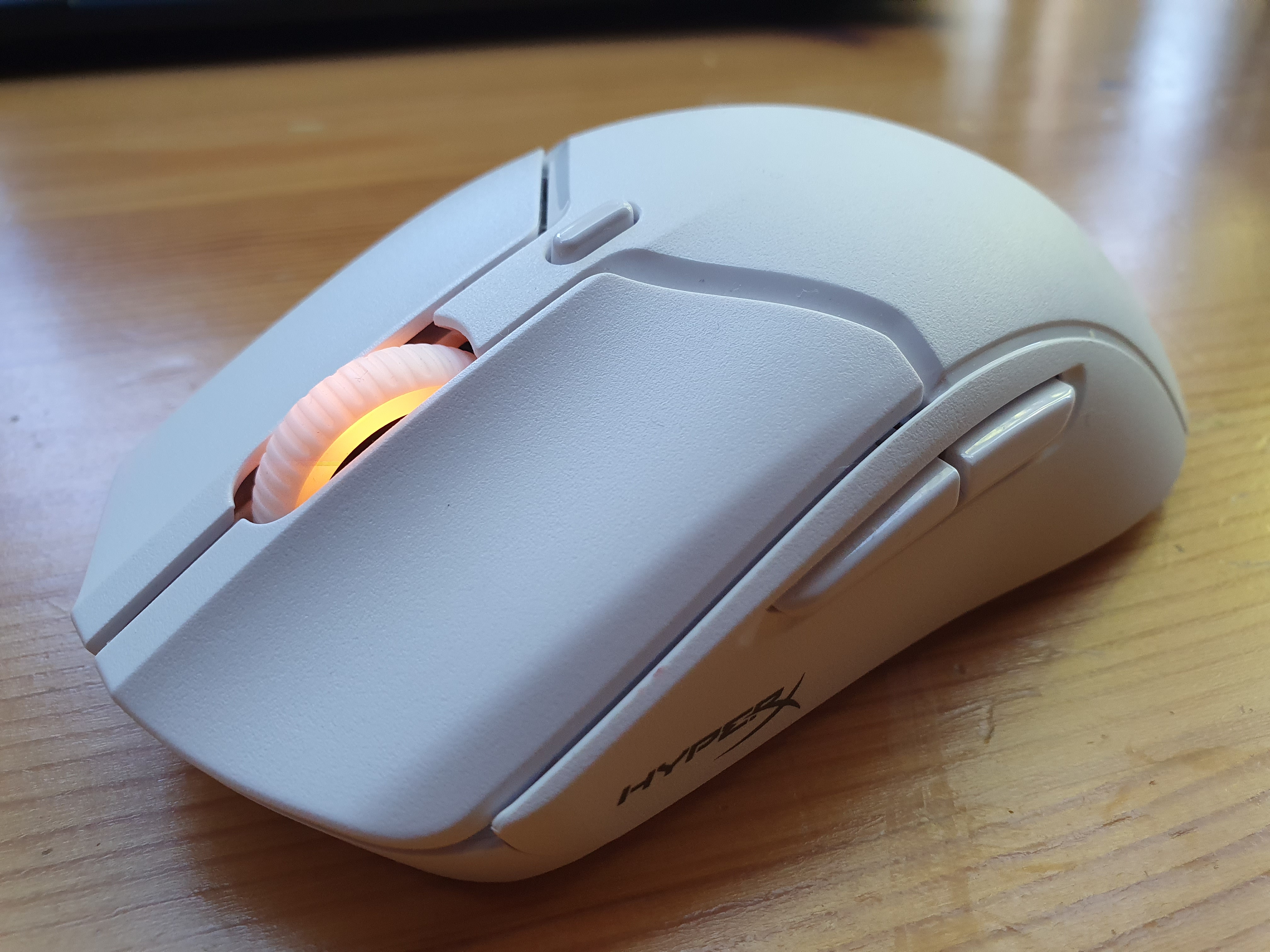
Pros
The solid top back is comfortable and stylish The 26,000 sensor can target at lightning speeds Bluetooth functionality makes it one of the most versatile esports mice you can get
Cons
The compact buttons can feel a bit cramped at times There’s just one RGB zone to play with It’s more expensive than its predecessor Best Prices Today:$79.99 at Amazon$89.99 at HyperX
Why I like the HyperX Pulsefire Haste 2 Wireless
The HyperX Pulsefire Haste 2 Wireless features a lightning-fast 26,000 DPI sensor, Bluetooth, and 2.4GHz wireless connectivity, as well as a dedicated DPI switcher, and still manages to be lighter and more affordable than some rivals. It weighs just a little over 2 ounces (61 grams), which is ideal for fast competitive gaming and esports. Its generous proportions and easy six-button configuration are just ideal to fit medium- and large-sized hands.
Who should buy the HyperX Pulsefire Haste 2 Wireless
Claw and fingertip gamers — the mouse’s solid plastic casing is a lot more comfortable for these grip types than its predecessor the HyperX Pulsefire Haste Wireless, which has a perforated casing. It’s also a great option for gamers on a budget since it undercuts competitors with similar features by around $50.
If you want to drop even less coin on your gaming mouse, then the $40 Logitech G203 Lightsync may fit the bill. It’s best suited to smaller hands though, so if you have a medium to large paw, the HyperX Plusefire Haste 2 Wireless is still the better option.
Read our full HyperX Pulsefire Haste 2 Wireless review
Swiftpoint Z2 – Best gaming mouse for tinkerers

Pros
Converts to a joystick The button layout and button customization is excellent Pressure sensors and haptic feedback give you a deeper level of functionality Has a powerful accurate sensor
Cons
Only one small RGB zone The joystick conversion provides only a small lift from a tabletop Wired connectivity only
Why I like the Swiftpoint Z2
It’s without a doubt the most customizable mouse that’s ever come across my review bench. Not only does this mouse allow you to customize its 13 programmable buttons with your choice of commands, but you can also customize the depth of actuation on those buttons, and the mouse tells you how deep you’ve clicked via haptic feedback.
If that wasn’t enough already, the Swiftpont Z2 has a mini-OLED display. It also has an inbuilt gyroscope and converts into a joystick, which is a blast in flight simulators.
Who should buy the Swiftpoint Z2
This mouse is great for gamers who like to tinker with their controls for a deep level of customization or gamers who liked the Mad Catz R.A.T 8+ and are looking for something with upgraded functionality. The only problem once you’ve decided this is the mouse for you, is picking one up; right now it’s sold out and Swiftpoint is taking back orders for future shipments.
Read our full Swiftpoint Z2 review
Razer Naga V2 Pro – Best gaming mouse for MOBA and MMO games

Pros
The swappable button plates let you tailor your button setup to your game’s command load The sensor is very accurate and without a hint of lag There’s tons of comfort and the build quality is excellent
Cons
The Razer Gen 3 Optical Switches are a little stiff at first and need wearing in It weighs 134 grams which is quite heavy even for an MMO mouse It’s currently very expensive Best Prices Today:$179.99 at Amazon$179.99 at Best Buy$179.99 at Razer
Why I like the Razer Naga V2 Pro
The Razer Naga V2 Pro does one better than just let me program my buttons how I like them — it features three swappable side-button plates that I can change out to tailor my mouse’s physical button setup to my game’s command load. Consequently, it makes a great all-around gaming mouse. In my playtesting I found it was especially perfect for MOBA and MMO games since you get a total of 22 commands with the 12-button plate attached, so there’s lots of options.
As well as a very comfortable design, the V2 Pro also sports an accurate and precise 30,000 DPI sensor and Razer Gen 3 Optical Switches in the buttons that actuate in just 0.2 milliseconds.
Who should buy the Razer Naga V2 Pro
In my playtesting I found it was especially perfect for MOBA and MMO gamers since they get a total of 22 commands with the 12-button plate attached, so there’s lots of options. In MMO games the mouse’s weightiness (it weighs 4.7 ounces, or 134 grams) made weapons play feel extremely authentic and highly satisfying.
If you don’t need swappable button plates another great option for MMO games is the Corsair Scimitar Elite Wireless, which has a full grid of 10 buttons on its left side. My pick of the bunch for MMO gamers that don’t need a side grid of buttons is the Razer Basilisk Ultimate. This mouse has an exceptionally smooth glide, solid feel, and precise sensor.
Read our full Razer Naga V2 Pro review
Razer Basilisk V3 – Best mouse wheel / Best for scrolling
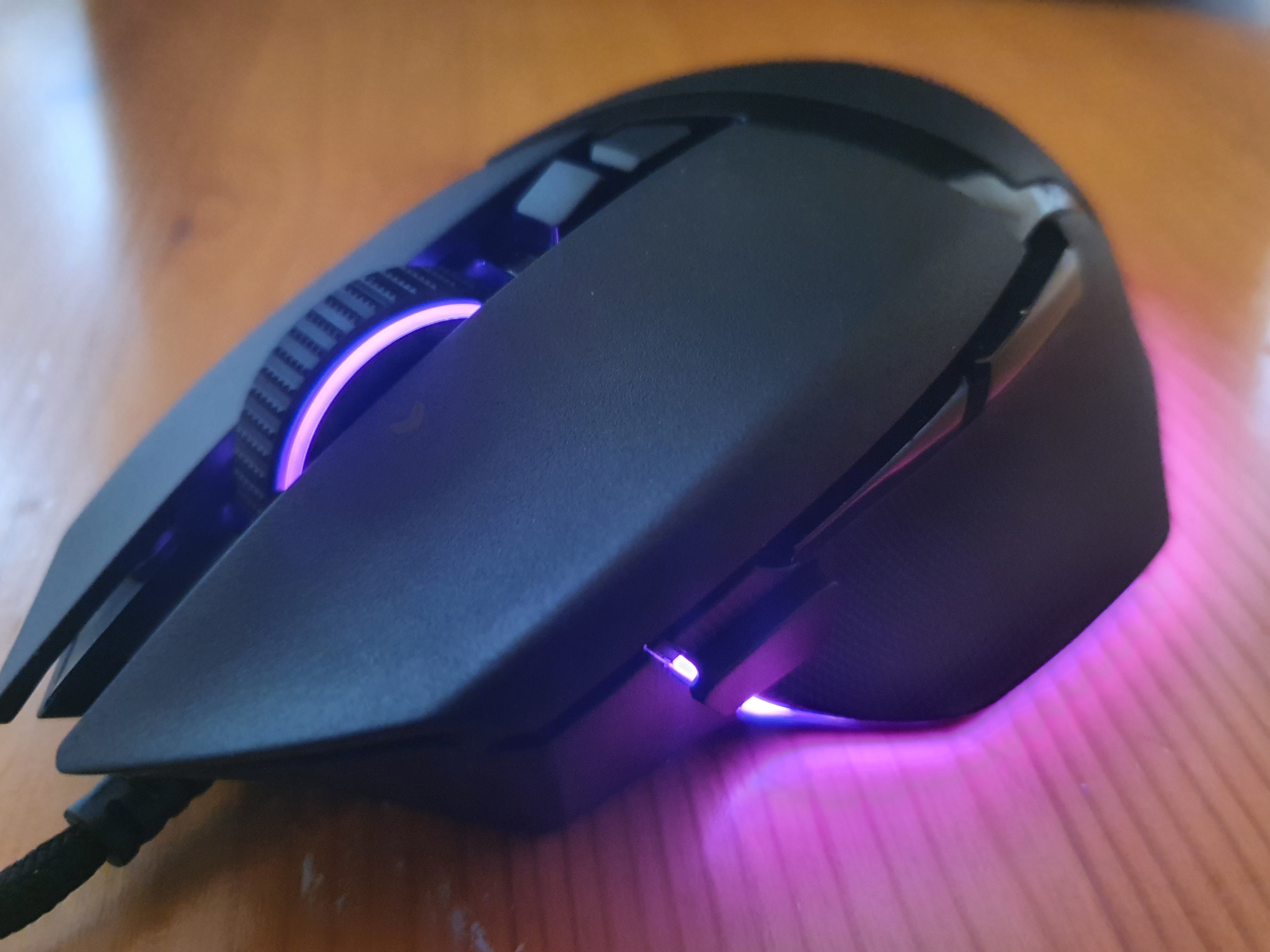
Pros
The Razer Focus + sensor gives faultless performance Scrolling is made simpler with the HyperScroll Tilt Wheel The RGB lighting looks fantastic
Cons
It’s quite heavy and bulky You’re limited to wired connectivity only Best Prices Today:$49.49 at Amazon
Why I like the Razer Basilisk V3
The Basilisk V3 resembles the Razer Basilisk V2 in size and shape, sporting similar right-handed curves and a slightly arched thumb rest. Among its best features are an 11-button layout, 26,000 DPI Razer Focus+ sensor, and second-generation Razer optical switches that I found very fast for all kinds of gaming — whether that’s casual or serious. But the real magic lies in the Basilisk V3’s HyperScroll Tilt Wheel, which is a fancy name for its mouse wheel. This tilts in four directions and triggers downwards to put five commands at your fingertips, ideal for tactical FPS games like Rainbow Six.
Impressively, the HyperScroll Tilt Wheel also has extra AI scrolling modes that made my scrolling and browsing a lot easier. In my testing I enjoyed toggling between “Tactile” and “Free-Spin” modes, which allowed me to switch between a slow, precise scrolling action and a faster, smoother scrolling action that was useful for getting to the end of long websites more easily.
Who should buy the Razer Basilisk V3
Anyone who wants to get fancy with their scrolling. With the right setup, the Basilisk makes scrolling game menus or long documents in Windows quick and easy.
Read our full Razer Basilisk V3 review
Alienware Pro Wireless Gaming Mouse – Best gaming mouse for esports / first-person shooters
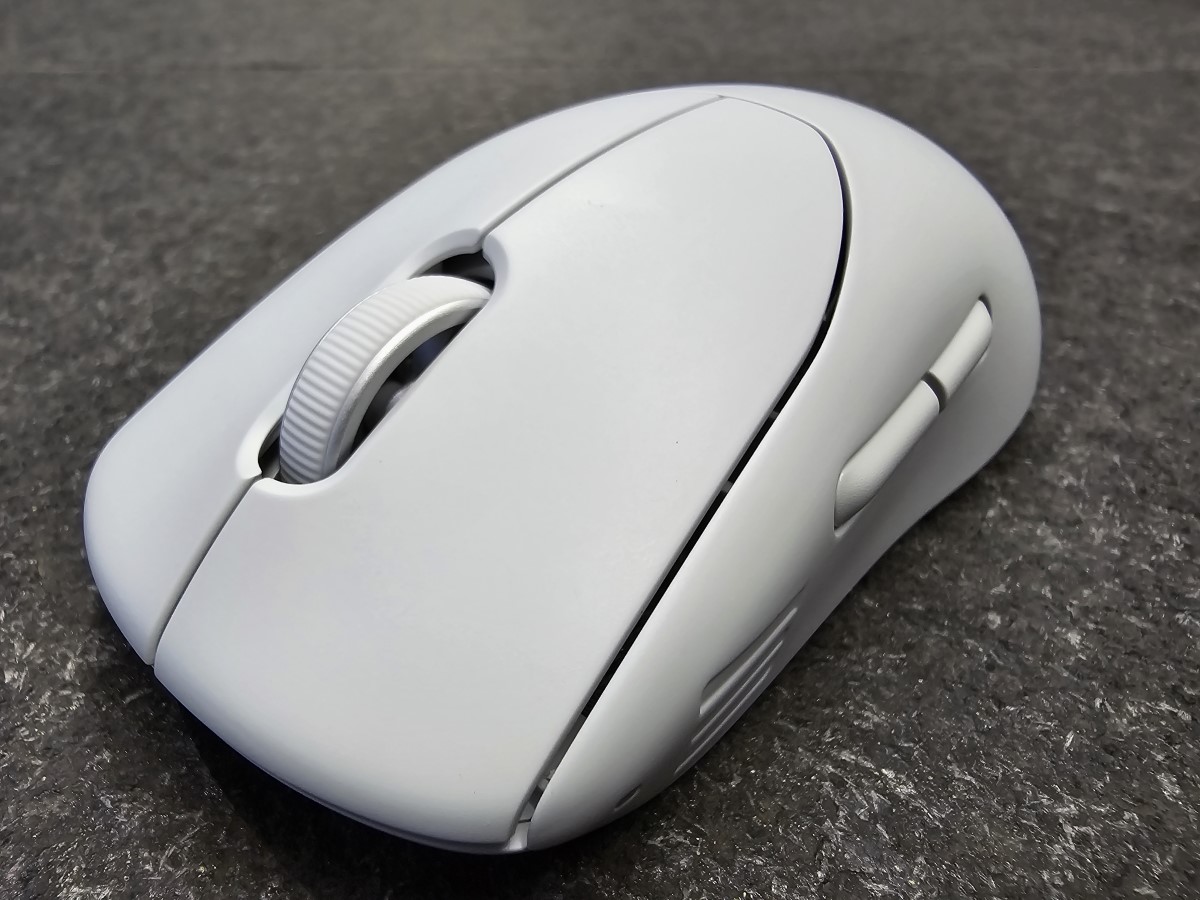
Pros
4KHz wireless polling rate The buttons are soft and have quick debounce The Alienware styling looks awesome One of the most precise mouse wheels I’ve used Weighs just over 2 ounces
Cons
The back could do with more height There’s no RGB lighting It’s quite large so won’t suit everyone Best Prices Today:$119.99 at Amazon
Why I like the Alienware Pro Wireless gaming mouse
You hear a lot about DPI being the main factor that determines performance. But quite frankly polling rate is twice as important for aiming at and hitting fast-moving players in FPS games. Hence why this mouse is so lethal — it comes with a 4KHz polling rate right out of the box, that’s quadruple the reporting rate of some other big-name FPS gaming mice.
Who should buy the Alienware Pro Wireless gaming mouse
Everything else about this mouse is tailored for speed and precision. From its 4K polling rate, to its ultra-light weight of just over 2 ounces, to its soft buttons with their ultra-quick debounce rate. For that reason, I’d recommend this mouse to gamers who want the fastest performance in FPS games.
For three other excellent options for FPS gaming check out the Logitech G Pro X Superlight 2, Razer DeathAdder V3 Pro, and Asus ROG Harpe Ace Aim Lab Edition.
Read our full Alienware Pro Wireless Gaming Mouse review
Keychron M3 mini 4K Metal Edition – Best buttons
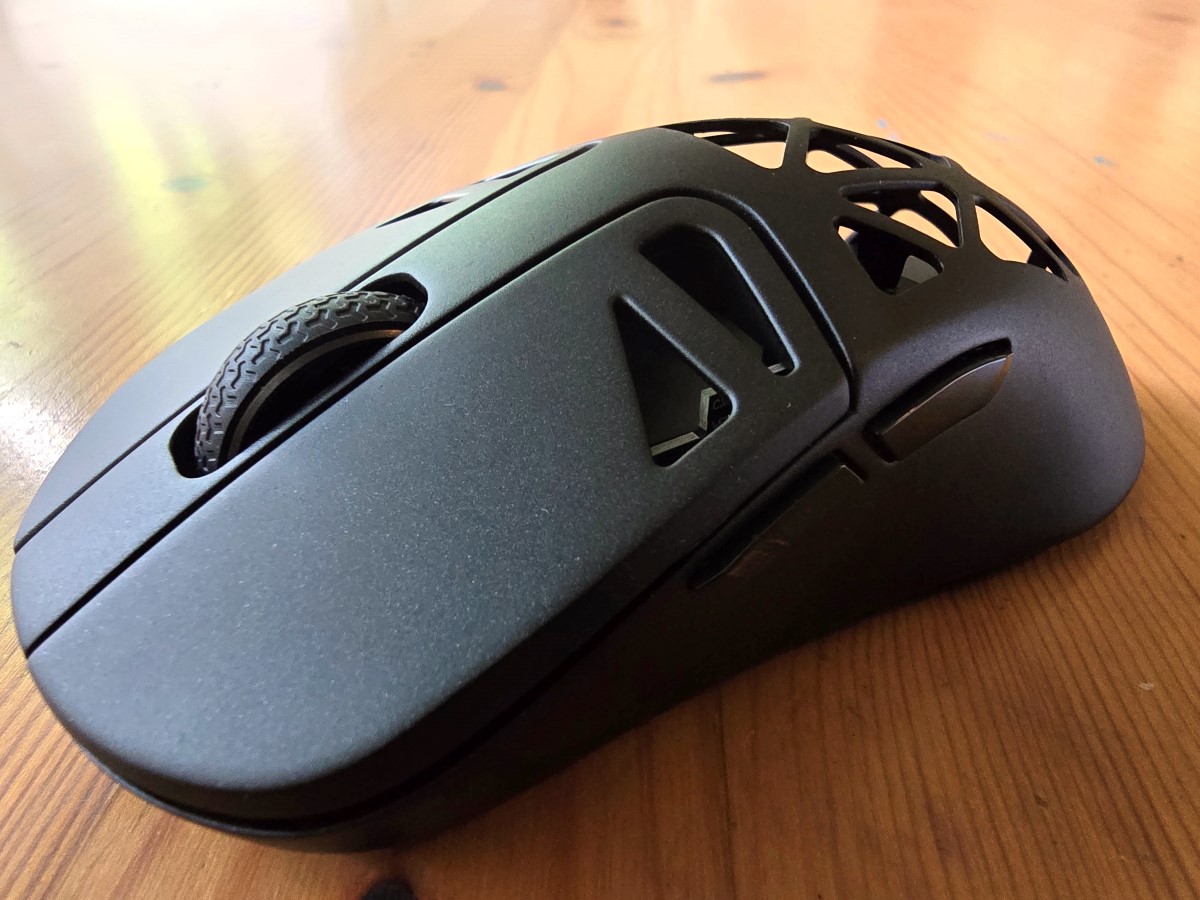
Pros
An excellent sensor that syncs movements precisely 4K polling rate Strong and lightweight metal chassis
Cons
Perforated back won’t suit claw grippers Smaller size isn’t great for large hands Battery life isn’t great in 4K polling mode
Why I like the Keychron M3 mini 4K Metal Edition
It’s very lightweight, weighing just 2.25 ounces (64 grams). Yet its chassis is made from magnesium, so it’s also very strong. I also had everything I needed to perform at my best — an accurate 26K DPI sensor, a lightning-quick 4K polling rate and soft buttons with a very quick debounce.
The Keychron M3 mini 4K Metal Edition is also cheaper than some rival gaming mice with similar specs, judging by its price tag at the time of writing my review; it cost $99 at Keychron, which is $50 cheaper than some very capable competitors.
Who should buy the Keychron M3 mini 4K Metal Edition
The Keychron M3 mini 4K is a one-of-a-kind mouse that makes an excellent all-purpose gaming mouse. Its interesting design also suits gamers wanting to make it a centerpiece of a collection. The mouse’s compact size does, however, mean it’s best suited to players with small-to-medium sized hands.
If you’re after a mouse with exceptionally quick buttons like this one, you might also like to check out the Glorious Model O 2 Pro 4K/8KHz Edition.
Read our full Keychron M3 mini 4K Metal Edition review
ROCCAT Burst Pro Air – Best RGB gaming mouse

Pros
Owl-Eye sensor is very precise and quick You won’t find a mouse with more stunning RGB lighting Dual wireless as well as wired connectivity
Cons
81-gram weight can feel heavy if you’re used to a lighter mouse Mouse wheel lacks left and right lateral clicks Pricey compared to some rivals Best Prices Today:$49.99 at Amazon$49.99 at Best Buy79.99 at ROCCAT
Why I like the ROCCAT Burst Pro Air
The ROCCAT Burst Pro Air’s four dedicated RGB lighting zones shine colored light through its semi-transparent body, creating a mesmerizing sheen-like glow that looks totally stunning from any angle. If the semi-transparent shell is my canvas, then ROCCAT’s Swarm app provides my painter’s palette, letting me go to town customizing each zone with up to 16.8 million colors and a range of stunning effects.
But as any gamer knows, looks aren’t everything. Consequently, I also chose the Pro Air because of its excellent gaming performance, which in my play testing I attributed to its comfortable eight-button design, powerful 19,000 DPI Owl-Eye optical sensor, and low-latency optical switches, which are rated for 100 million clicks.
The Pro Air also scores big points for its excellent connectivity options, which includes low-latency 2.4GHz Wi-Fi and Bluetooth 5.2 wireless options, and a USB-A to USB-C cable for wired connectivity. For another great ROCCAT gaming mouse that has previously taken top position for ‘Best RGB gaming mouse’ also check out the ROCCAT Kone XP.
Who should buy the ROCCAT Burst Pro Air
If you appreciate a bit of RGB artistry in your gaming getup or want to create a mesmerizing light show to go with your other dazzling RGB gaming gear, then this looker is ideal.
Read our full ROCCAT Burst Pro Air review
Cherry Xtrfy M8 Wireless – Most original gaming mouse design
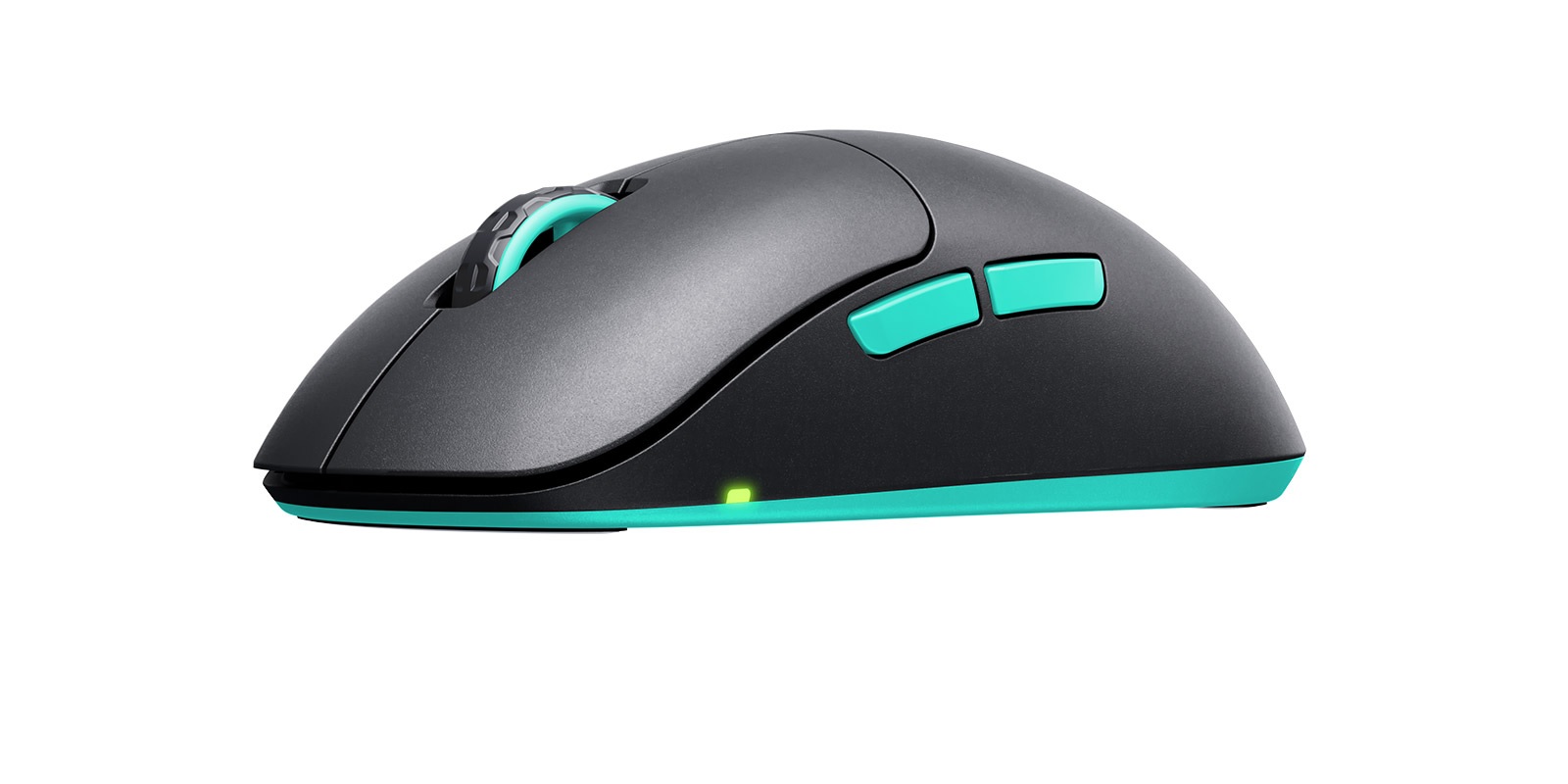
Pros
Very good sensor Ultra-flat front Very light Eco-friendly design Long battery life
Cons
Unusually placed charging socket Design might take some getting used to for some users Best Prices Today:$99 at Amazon
Why I like the Xtrfy M8 Wireless
The Xtrfy M8 Wireless’ design is as unique as possible, with the charging socket placed on its right-side rather than at the front like just about every other gaming mouse you will find. But while some players may like that and others not so much, what I salute the most in its design is the fact that its housing is made from 60 percent recycled plastic.
Who should buy the Xtrfy M8 Wireless
Despite the reused materials and side charging socket, this mouse’s hardware is just perfect for pro-gamers. It’s powered by a Pixart 3395 sensor with a maximum resolution of 26,000 DPI. A low-latency 2.4GHz Wi-Fi signal provides a response time as fast as 1 millisecond.
If changing debounce is your jam, the M8 also allows you to choose between four settings: 2, 4, 8, or 12 milliseconds. Plus, it weighs just 1.94 ounces (55 grams) which makes it one of the lightest and quickest mice you will move over your mouse mat.
Read our full Cherry Xtrfy M8 Wireless review
Razer Viper V3 Hyperspeed – Best dual-purpose gaming and productivity mouse

Pros
Quick and accurate sensor High sensor positioning Very long battery life
Cons
No RGB lighting 2.4GHz Wi-Fi connectivity only Weighs less than 3 ounces Best Prices Today:$54.99 at Amazon
Why I like the Razer Viper V3 Hyperspeed
With no RGB lighting and a modest uni-color Black casing, the Razer Viper V3 Hyperspeed is stealthy enough to be your work or study mouse, and yet it also has some of the best hardware for esports you can find in a wireless mouse. That includes a whopping 30,000 DPI Razer Focus Pro Optical Sensor and super-quick Razer Gen 2 Mechanical Switches.
The Viper V3 Hyperspeed’s design gives you precision control of your movements; it features a high back and lots of length in the fingers so that you can stretch out in a palm grip. The high position of the sensor catches your movements at their origin for split-second quicker movement than we’ve experienced in some rivals. The Viper V3 Hyperspeed also supports 4,000Hz HyperPolling, which really makes this mouse cook with fire in fast action games like CouterStrike — although you will have to shell out $29.99 extra for the HyperPolling dongle (not included). The Viper V3 also has excellent battery life. In fact, a single AA battery provides up to 280 hours of operation at the mouse’s default polling rate of 1,000Hz.
The V3 Hyperspeed currently costs $69.99 at Razer, Amazon, and Best Buy. In a similar vein but with more modest hardware and for $15 cheaper, be sure to check out the Razer DeathAdder V2 X Hyperspeed too.
Who should buy the Razer Viper V3 Hyperspeed
Players who want a kick-ass gaming mouse that’s also stealthy enough to double as a school or work mouse. It’s also a great option for those who like the feeling of a mouse with a high back and slightly flared main buttons.
Read our full Razer Viper V3 Hyperspeed review
MSI Clutch GM51 Lightweight Wireless – Best rechargeable gaming mouse

Pros
Charging dock included Current high-end sensor from Pixart Omron switches Three connection modes (2.4GHz, Bluetooth, wired) Good price-performance ratio
Cons
A bit heavy for “Lightweight” Software is a little convoluted Best Prices Today:$84.99 at Amazon
Why I like the MSI Clutch GM51 Lightweight Wireless
The MSI Clutch GM51 Lightweight Wireless gaming mouse combines practicality, functionality, and stellar looks better than just about any other gaming mouse. As well as supporting all three connectivity types — 2.4GHz Wi-Fi, Bluetooth, and wired — it features visually striking RGB Diamond Lightgrips down each side that hold your fingers to the mouse’s body and provide you with a lot of precision control over movement. Another practical feature is the convenient charging dock that makes recharging a piece of pie and means it’s very difficult to ever run out of battery.
The GM51 Lightweight Wireless has impressive hardware for gaming, including a Pixart PAW 3395 sensor with a maximum resolution of 26,000 DPI and Omron switches in its buttons, which are known for their durability and speed.
Who should buy the MSI Clutch GM51 Lightweight Wireless
Although its 3.1-ounce (89 grams) weight is at the upper end of what many would call lightweight, the MSI Clutch GM51 Lightweight Wireless’ balanced size makes it especially comfortable for players that adopt palm and claw grips. It’s also a great option for players who play for long stints and like the convenience of not having to plug their mouse in to charge after every gaming session.
Read our full MSI Clutch GM51 Lightweight Wireless review
How we test gaming mice
To ensure that our gaming mice selections are the pick of the crop, the PCWorld team subjects them to extensive play testing as well as a legion of other tests. We scrutinize everything from how well a mouse perform in games, to the size and shape of it in the hand, to comfort and ergonomics, to customizations. Here are the main categories our tests fall under:
Gaming performance: At the end of the day it doesn’t matter how a mouse looks; it’s how it performs that matters. To evaluate a mouse’s performance we look specifically at how sensitive and responsive its sensor is and also how well the sensor tracks movement. Precision is also a key consideration, with mice that are more accurate generally scoring better in our reviews than those that aren’t. In wireless mice we also evaluate the speed and strength of the Wi-Fi and Bluetooth signals, keeping a look out for red flags like signal dropouts or interference. Some mice also come with software enhancements that determine the mouse’s lift-off distance, which we also examine in our testing. Design and ergonomics: You won’t find another tech device for which design plays a more crucial part of a user’s experience. And, while it’s true that there’s no one shape, size, or configuration that fits every gamer, there’s enough variation out there for every gamer to find their own perfect fit. When looking at design, we consider the size and shape of the device itself and the type of hand it fits. Gamers tend to use one of three common grip types—palm, claw, or fingertip—so a mouse’s compatibility with one or all of those types is a big consideration. Software: Being able to tweak settings like your mouse’s DPI and polling rate and create specific profiles for your favorite games can make or break your gaming experience, which is why a mouse’s software support is so important. Our PCWorld reviewers’ focus here is to consider the range and scope of software support and how readily settings can be modified, changed, and saved for future use.
For more details about our testing process, see our article on how we test gaming mice at PCWorld.
FAQ
1.
Should I choose a wired or wireless mouse or one with both connectivity types?
It used to be generally well accepted that wired gaming mice had the edge over their wireless counterparts, providing gamers with a much faster and more accurate signal between mice and PCs. However, that’s less true today thanks to the popularity of 2.4GHz Wi-Fi and Bluetooth wireless technologies, which have almost levelled the playing field.
I say almost, because there’s no denying that wired gaming mice still deliver the fastest and most secure connections you can get. That said, whether you choose one type over the other should come down to your gaming priorities.
If you’re a serious competitive gamer or esports player, where winning or losing sits on a knife’s edge, opting for a wired mouse over a wireless one is a good decision, since it’s less likely a signal dropout or interference will disrupt your play. Every competitive edge counts. However, wireless mice are infinitely more portable and allow you to switch between devices at a whim, so if nimbleness and portability is more important, a wireless mouse will be a better fit.
2.
What size and shape mouse should I get?
Hands, just like gaming mice, come in all different shapes and sizes, and for comfort reasons it pays to match like with like. While categorizing sizes of hands can be highly subjective, chances are you’ll be able to guess whether your hand is on average small, medium, or large. You can then find a mouse that best fits from among the size categories below:
• Small gaming mouse: Length: Less than 6.7 inches; width: 2.9 to 3.3 inches
• Medium gaming mouse: Length: 6.7 to 7.9 inches; width: 3.3 to 3.9 inches
• Large gaming mouse: Length: 7.9 inches; width: 3.9 to 4.3 inches
Gaming mice generally come in three shapes: left-handed, right-handed, and ambidextrous. Ambidextrous mice are designed to be neutral in that they can be just as easily used by your left or right hand. Alternatively, left-handed and right-handed mice are tailor-made for the dominant hands specified by their namesakes, often sporting bespoke curves and button placements for one or the other. Unless you switch between hands, using a gaming mouse that matches your dominant hand will go a long way to improving your performance and comfort.
Your preferred grip type should also be considered when selecting a suitably shaped mouse. Here’s a rough guide for matching grip types with mouse shapes:
• Palm grip: Long, flat mice tend to be a better fit and more comfortable
• Claw grip: Narrower and smaller mice tend to suit this grip style
• Fingertip grip: Lighter mice are often preferred by fingertip grippers to reduce strain
3.
How light should my mouse be?
Gaming mice weights have been gradually trending downwards over the years as players look for lighter options that are quicker to move and prevent arms and wrists getting overly tired or sore in long play sessions. FPS (first-person shooter) gamers in particular tend to go for the lightest mice possible, seeing every millisecond of speed advantage as worth chasing.
Despite this, there’s no ideal gaming mouse weight for all gamers, but rather a deeply personal preference. In fact, some gamers—often those with larger hands or stronger arms—actually prefer heavier mice for the extra stability they get. Still if you are one of those looking for the lightest mouse possible, anything under 70 grams will be among the lightest on the market.
4.
Does DPI really matter on a gaming mouse?
Your mouse’s sensor is the essential hardware component that relays movement to your PC. Mice sensors are rated for DPI, or dots per inch, which tells us how far a cursor moves per inch of mouse movement—that is, how sensitive it is. Manufacturers really hype up the importance of high DPIs, which can be a bit misleading because they don’t necessarily equate to better gaming performance (they can, but not in all circumstances).
For example, if you play a lot of FPS and want the absolute best accuracy while targeting opponents, a lower DPI (between 800-1,000) is preferable, since this allows you to make short, sharp, and precise movements more easily. However, if you make a lot of wide, sweeping hand movements, or if your display is a very high resolution, a mouse with a high DPI (between 12,000-30,000 DPI) can be an advantage.
The great thing about most modern gaming mice is that they can switch between DPI profiles just by clicking a small button behind the mouse wheel. That said, our advice is to opt for a gaming mouse with the highest DPI your budget allows, and then choose your preferred setting for different gaming scenarios by using this handy DPI-switching feature.
5.
Is an optical or laser sensor better for a gaming mouse?
Optical sensors are the most popular with gamers since they tend to have less jitter and smoothing problems. These sensors work by casting down infrared or LED light onto your mousepad and capturing thousands of digital images per second, that then reveals the precise location of the mouse to the PC.
On the other hand, laser sensors use a vertical-cavity surface-emitting laser diode to determine positioning. In most cases an optical sensor will do just fine. However, if you plan on using your mouse on a translucent surface (like glass), a laser sensor is preferable since it will have better sensitivity to a variety of surface textures.
6.
How many buttons do I need on a gaming mouse?
The type of games you play should help you determine how many buttons you need. For example, if you’re a big fan of real time strategy (RTS), role-playing games (RPG), or massively multiplayer online (MMOs) games, you’d be we’ll advised to choose a mouse with between 10 and18 buttons—like the Razer Naga V2 Pro or the Corsair Simitar Elite Wireless. These games typically require you to fire off a lot of commands quickly, so the more buttons you have to program commands and macros in, the better.
On the flipside, if FPS is your go-to game type, you’ll probably want to keep your button count to between 6 and 8 buttons. Chances are you won’t need the higher button-count for your smaller list of commands. Plus, buttons tend to increase a mouse’s weight, so opting for a mouse with fewer will most likely mean it’s lighter and quicker to move in the frantic FPS action.
7.
Should I get RGB lighting on a gaming mouse?
RGB lighting is a fun feature to have in any gaming device that can brighten up your gaming den with pops of color. It can also be pretty useful, allowing you to see your device better in dimly lit rooms or at night. And yet, there may be times when you opt to use a mouse that has only a minimal RGB, or none at all.
The most common example is if you plan on using your gaming mouse covertly at work. In this case, mice like the Razer Viper V3 Hyperspeed, that have no RGB lighting zones and can convincingly pass as standard black office mice, are ideal because your colleagues will be none the wiser.
Author: Dominic Bayley, PCWorld Australia Editor
Based in Australia, Dominic Bayley is a hardcore tech enthusiast. His PCWorld focus is on PC gaming hardware: laptops, mice, headsets and keyboards.
Recent stories by Dominic Bayley:
How to tell if a gaming mouse will give you a sore wristRazer Basilisk Ultimate review: A mouse for hyper-realistic MMO gamingDestiny 2’s Final Shape expansion is $50, and worth every penny





